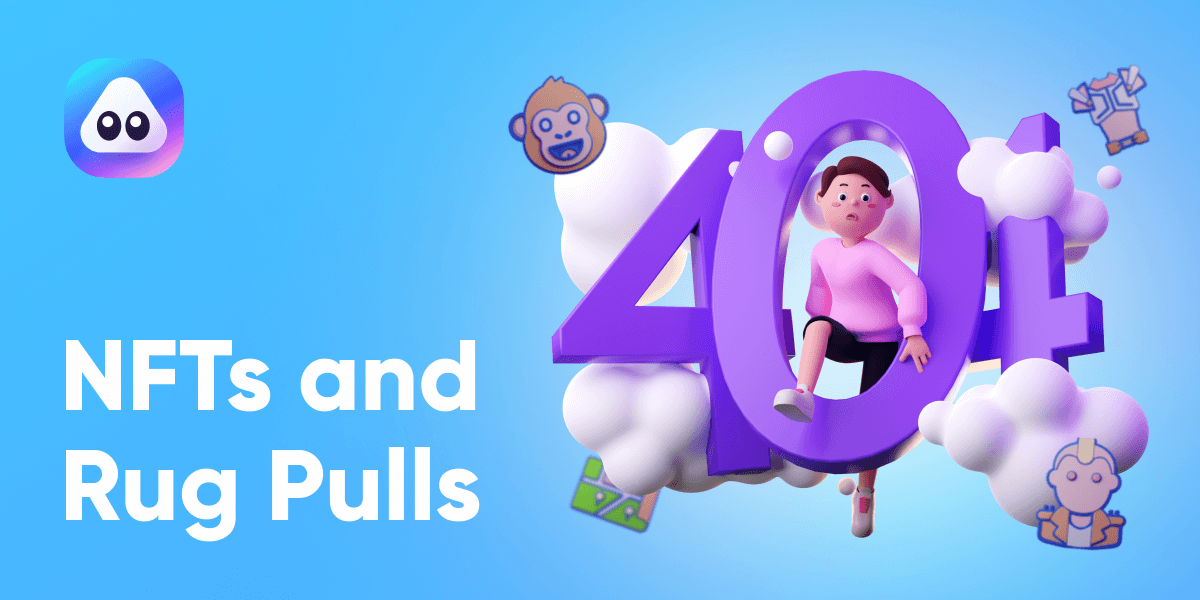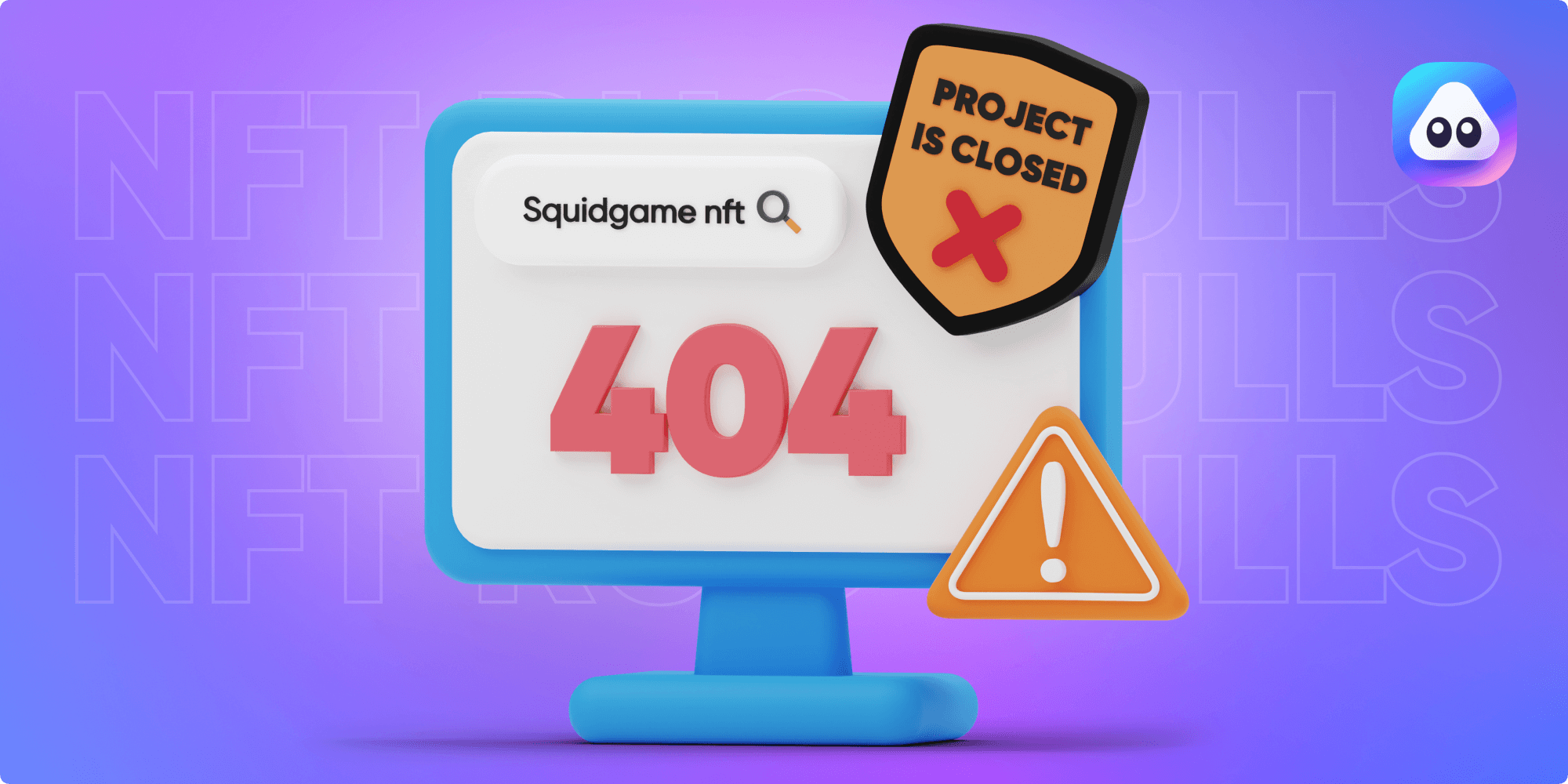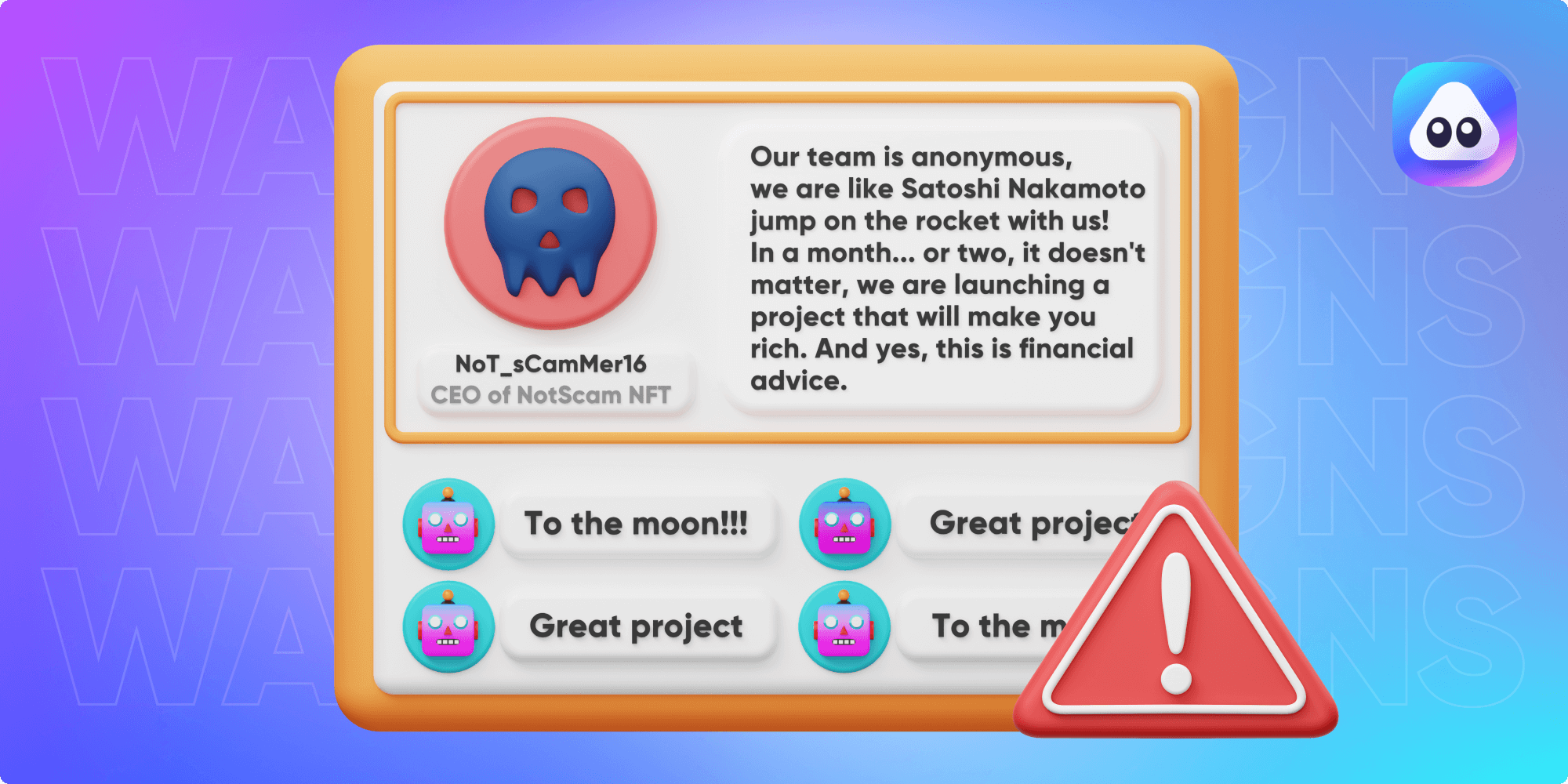NFTs and Rug Pulls - How to Stay Safe
NFTs are no exception to malicious attacks. Learn how to protect yourself from the ravaging spate of NFT rug pulls.
June 20, 2022

How to Avoid NFT Rug Pulls
Change is a constant thing in markets, and we have seen NFTs take up several shapes and forms since inception. Unfortunately, while the growth cannot be denied, this crypto sector has been plagued with several scammers trying to take advantage of new entrants with their cash-grab ventures. This piece will show you how to spot NFT rug pulls and avoid falling victim to one.
What are NFT Rug pulls, and How Do They Occur?

In its most simplistic form, a rug pull connotes a business exit scam where the founders or lead developers of a project part with investors’ funds after fundraising. These founders often come with enticing plans but neither execute the projects nor help investors get returns on their capital. Rug pulls are not novel scams in crypto, a recent one being the squidgame token rug pull that left millions of users in despair after the founders cleaned out up to $3 million of users’ funds.
For NFTs, there are numerous ways in which rug pulls can occur. First, these projects might offer presales of their NFTs, with grandiose promises on how they are the next best thing and fixed release date. Then, after minting the tokens, common sequel include:
- Dumping: the founder sells their holdings when the hype is highest and vanishes. Some can own up to 40% of the NFT collection, and as one might expect, prices will go down eventually, leaving unsuspecting traders with illiquid assets.
- Hard rugging refers to when developers input the smart contract codes to prevent NFT holders from selling or create backdoor access that allows only the developers to sell their tokens.
- The developers can also pair NFTs with an altcoin, shoot the price up by pumping said altcoin, and then removing liquidity.
Warning Signs of NFT Rug Pulls

NFT rug pulls often come with early red flags such as the following:
- Anonymous Founders: Although the concept of anonymity in crypto startups is still subject to arguments, it is always safer to pitch your tent with known and credible founders. Anonymity might predispose them to rug pulls since nobody knows can bring them to question or seek legal recourse in case things go south. As an NFT enthusiast, you should scrutinize all the available social media platforms and websites and establish that the founders’ names are real and not just pseudonyms.
- Unclear Plans: There is some level of quality required in a project that plans to stay for the long term. Many NFT rug pulls often lack clear plans in their white papers and can even feature copied plans. A white paper is supposed to be more than a promotional sheet, and any project with such just wants to entice people. There should be more emphasis on the use cases, tokenomics, and advantages, with charts and stats backing up these claims.
- Social Media Engagement: Social media engagement now has several sides, with the ease of buying bots and sponsoring content via paid influencers. First, however, you must remember that projects that would stand the test of time strive to put out quality work, request and review feedback often, and limit errors to the barest minimum. Also, suppose the project has immense discord and telegram following but barely gets reasonable engagement asides from the traction that comes with the promise of whitelists and other rewards. In that case, you should be wary of them.
- Liquidity: The liquidity pulled into a project could be another sign of authenticity or rug pull. Generally, you need to check the amount and the duration for which it has been there and the percentage ownership of the tokens. If the liquidity is locked, it is also a good sign. Good projects think in years, not in weeks or months.
NFTs and Rug Pulls - How to Stay Safe: Bottom line
Avoiding NFT rug pulls ultimately comes down to doing due diligence and noting early warning signs. Hence, you must always conduct proper research before investing in any project.
Thankfully, you can stay clear of rug pulls by investing in verified projects on AirNFTs.
Open our app to start trading NFTs now!
